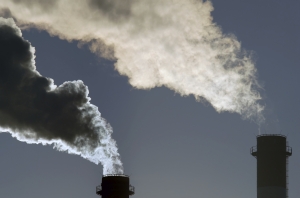MELBOURNE, May 5, 2016 – Following the release of today’s Emissions Reduction Fund auction results by the Clean Energy Regulator, below, we summarise the key outcomes. With customers at over 150 Australian power, energy, metals, mining, land-use, waste, financials and government agencies, RepuTex is Australia’s largest provider energy and emissions market analysis.
HEADLINE OUTCOMES
- The Clean Energy Regulator has contracted 50.47 million tonnes (Mt) of abatement at the third ERF auction, an increase from the first two ERF auctions, which contracted 47 and 45 Mt of abatement.
- Abatement will be supplied over 1-10 years in line with contract terms.
- The $10.23 average price is lower than the first two auctions ($13.95 and $12.25).
- The Regulator has now committed $1.7 billion, or 67 per cent of its $2.55bn budget.
REPUTEX COMMENTS
Prices driven down by larger projects
- In line with our expectations, the average price of abatement fell from auction two, with “mega-projects” dragging down the average price.
- The largest project, from Terra Carbon (regeneration), supplied 15 million credits – or 30 per cent of all credits purchased by the Regulator, while the ten largest projects together supplied over 75 per cent of all abatement.
- Subsequently, the average price of abatement disclosed by the Regulator reflects just one large project.
- While the average price has fallen, we estimate that the majority of proponents secured contracts well above the average price, with contracts entered into over a wide spread of prices. This suggests the Regulator continues to have an appetite for higher contract prices
Price floor has been reached – rebound likely
- At $10.23, we believe the ERF may now have arrived at a price trough – there is likely to be little abatement offered at prices lower to this in the next auction.
- Subsequently, should the participation of mega projects recede, we may see prices rise from this floor at the next action.
- Notably, the lower number of contracts awarded suggests that many of the early project developers have lost interest in the ERF, with current prices not high enough to incentivise their participation.
The broad view – Industry emissions continue to grow
- While, in isolation, the ERF has been successful in contracting a large volume of credits, it has not curbed Australia’s emissions growth.
- Notably, the rate of annual emissions growth continues to outpace credits contracted by the ERF. This growth is driven by Australia’s largest emitting companies, which have to date not participated in the ERF due to the voluntary nature of the scheme, and the large up-front costs.
- Current estimates from the Department of Environment indicate that Australian emissions will grow 5 per cent from today, to be 577 Mt CO₂-e in 2020, or 3 per cent above 2000 levels in 2020, despite the ERF. This is short of Australia’s minus 5 per cent target of about 530 Mt CO₂-e in 2020.
- As noted in earlier updates, while national emissions will not fall to minus five percent, Australia will be able to meet its international commitments under the Kyoto Protocol by utilising an ‘accounting benefit’ of approximately 130 million tonnes.
- While our international commitment may be met, any emissions increased from today will be added to Australia’s post-2020 emissions reduction task, and will compound the cost of action later.
ERF funding and remaining auctions
- With 67 per cent of the government’s $2.55bn ERF funding allocated, we continue to assume that there will be one more complete auction in November 2016, before the first funding trance of the ERF is severely depleted.
- Potential remains for a fifth auction to be held in early 2017, however we view this as a run-off event, with available funding likely to be far smaller than earlier auctions (should a fifth auction take place at all).
- With no further funding for the ERF allocated at the 2016 Federal Budget, the risk of a ‘demand gap’ continues to loom for local project developers, whereby no mechanism will be in place to purchase credits once funding is committed.










